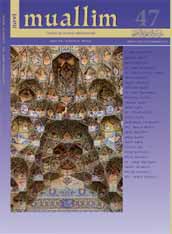VAKUFI U RAZLIČITIM POLITIČKIM SISTEMIMA - ODNOS VLASTI PREMA VAKUFIMA, POSEBNO NAKON AGRESIJE NA BIH
THE WAQF IN VARIOUS POLITICAL SYSTEMS – ATTITUDE OF THE AUTHORITIES TOWARDS THE WAQF, PARTICULARLY AFTER THE AGGRESSION ON BOSNIA AND HERZEGOVINA
Author(s): Enes DurmiševićSubject(s): Politics / Political Sciences
Published by: Rijaset Islamske zajednice u Bosni i Hercegovini
Summary/Abstract: During the Tanzimat era Ottoman government in Bosnia regulated the position of waqf with several laws, the most important of which was the Law of Directing the Waqf of 1863. After the occupation in 1878, Austro-Hungarian government formed the National Waqf Board in 1883. The board was, however not authorised to make any decision without commissioner for the waqf matters appointed by the government, nor could a session of the board take place without his presence. The National Waqf Directorate was formed in 1894 and it was directed by the official appointed by the National government until 1909 when the Statute for Autonomous Administration of Islamic Religious, Waqf, and Educational Affairs in Bosnia and Hezegovina was brought, consequently Waqf-Mearif Assembly became supreme administrative and supervising body for directing the waqf affairs. In the period of the Kingdom of Serbs, Croats and Slovenes, later called Yugoslavia, from 1918 to 1941,only in Sarajevo, four million dunums (400 000 hectares) of land owned by waqf were seized, 24 mosques were demolished, among those were: Khawage Kamal Mosque known as Ćemaluša (demolished in 1940), two madrasas ( Inadia Madrasa that was situated in Bentbaša, and Aatmaydan Madrasa or Misriyyah situated at Aatmaydan), 75 Muslim graveyards were exhumated, 108 ducans/stores and 118 houses with courtyards were snatched and so on. In Tito’s Yugoslavia from 1945 to 1958, according to data of the Waqf Directorate in Sarajevo, the number of properties seized from waqf (stores, houses, flats, mosques, buildings) counts to 11.324 of total area 30. 342.496 square meters. Only in Sarajevo, old town 246 stores were destroyed, 14 Mactab properties were snatched, 25 houses for the imams, taqiyyah on Bentbasa as well as the one in Skenderija were demolished, Skenderpasha Mosque in Skenderija and Kalin Hajji Ali Mosque (Čairdžik) near the National Theatre also demolished. During the aggression on Bosnia and Herzegovina 1992-1995 aggressor has ruined1347 buildings belonging to waqf (mosques, masjids, mactabs and takiyyas), and other 472 waqf estates were damaged. The new Democratic government, for full twenty years has not managed to solve the issue of the restitution of the waqf property, the reason for that is eather the fact that a great deal of the waqf property is in their hands now, or that it serves them as means of manipulation to keep themselves in power. Material damage that waqf of the Islamic Community here has endured since 1996 as a result of not retrieving its property counts up to 286 million KM, ant the actual damage comes to 1.3 billion KM. Annual loss of the waqf in BiH is estimated to 25.5 million KM. The task of the Islamic community of BiH and all its members is to use all the legal and political means to facilitate the recovery of this property for it is inviolable and sacred.
Journal: Novi Muallim
- Issue Year: 2011
- Issue No: 47
- Page Range: 15-24
- Page Count: 10
- Language: Bosnian

